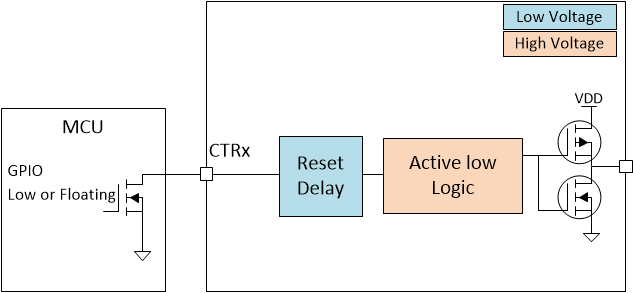ZHCSMU7E august 2020 – august 2023 TPS38-Q1
PRODUCTION DATA
- 1
- 1 特性
- 2 应用
- 3 说明
- 4 Revision History
- 5 Device Comparison
- 6 Pin Configuration and Functions
- 7 Specifications
-
8 Detailed Description
- 8.1 Overview
- 8.2 Functional Block Diagram
- 8.3 Feature Description
- 8.4 Device Functional Modes
- 9 Application and Implementation
- 10Device and Documentation Support
封装选项
机械数据 (封装 | 引脚)
散热焊盘机械数据 (封装 | 引脚)
- DSK|10
订购信息
8.3.6 Manual RESET (CTR1 / MR) and (CTR2 / MR) Input
The manual reset input allows a processor or other logic circuits to initiate a reset. In this section MR is a generic reference to (CTR1 / MR) and (CTR2 / MR). A logic low on MR causes RESET1 to assert on reset output. After MR is left floating, RESET1 will release the reset if the voltage at SENSE1 pin is at nominal voltage. MR should not be driven high, this pin should be left floating or connected to a capacitor to GND, this pin can be left unconnected if is not used.
If the logic driving the MR cannot tri-state (floating and GND) then a logic-level FET should be used as illustrated in Figure 8-8.
 Figure 8-8 Manual Reset
Implementation
Figure 8-8 Manual Reset
Implementation
| MR | SENSE ON NOMINAL VOLTAGE | RESET STATUS |
|---|---|---|
| Low | Yes | Reset asserted |
| Floating | Yes |
Fast reset release when SENSE voltage goes back to nominal voltage |
| Capacitor | Yes | Programmable reset time delay |
| High | Yes | NOT Recommended |